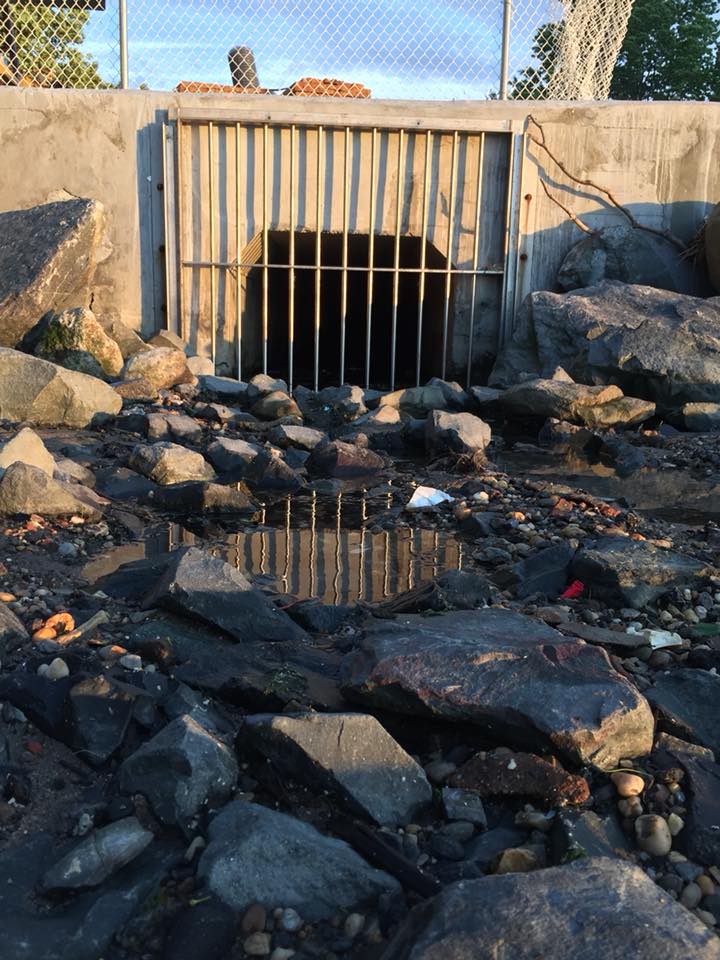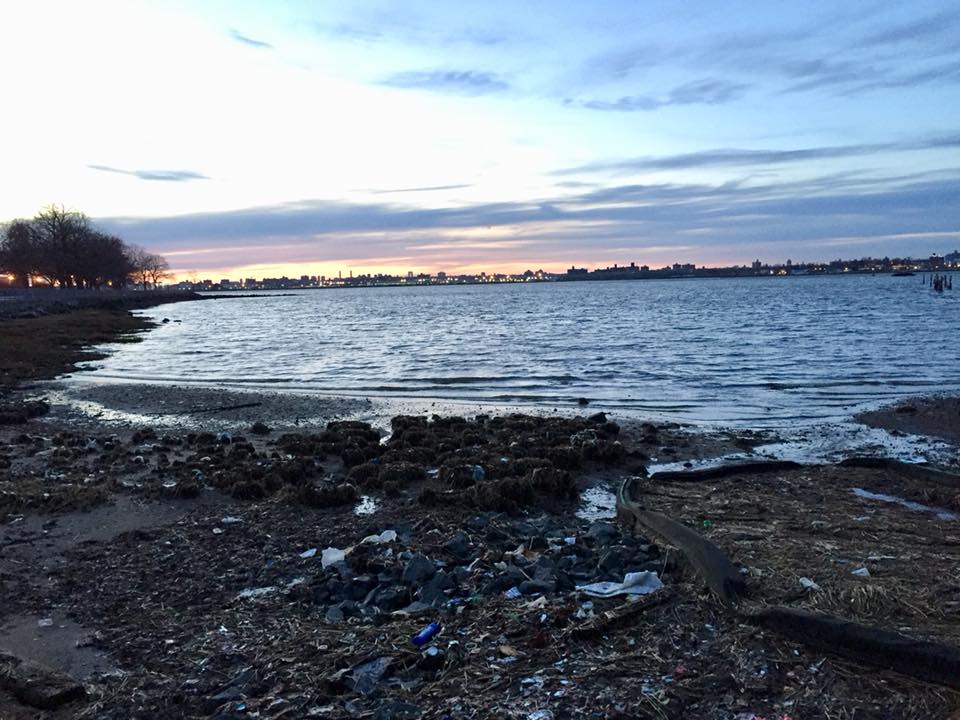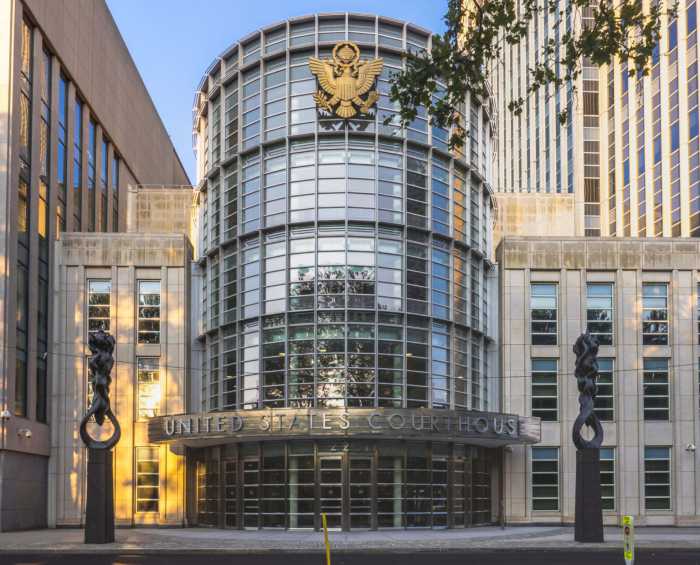At the beginning of November, the Department of Environmental Protection revealed that it would soon extend a stormwater outfall pipe which faces the East River in College Point‘s MacNeil Park.
According to Councilman Paul Vallone, who had gotten word from DEP, the agency would extend the pipe 200 feet beyond the shoreline in order to protect a restored oyster reef at the formerly polluted cove.
DEP put the Department of Design and Construction (DDC) in charge of the project, which is currently in its design phase.
In the early 2000s, the state Department of Environmental Conservation granted a permit to College Point resident Dr. James Cervino and fellow marine biologists to establish and restore the oyster reef, sea grass and other marine life at the MacNeil Park waterfront.
DEP’s proposal to install the outfall pipe at the MacNeil Park cove in 2016 sparked outrage and concern within the community. Dr. Cervino and his wife Kat Cervino, president of the Coastal Preservation Network (CPN) and a vice president of the College Point Civic Association, brought their concerns to Vallone. The pair highlighted the planned pipe’s proximity to the salt marsh oyster reef and potential reversal of over a decade of hard work.
The pipe’s purpose is to improve water quality and local stormwater drainage but critics said that it functioned at the risk of affecting the marine life’s long term health and caused erosion on the beach.
“Three years ago, when we first learned that the replacement outfall pipe would dump polluted street water right out onto our beach, we were horrified,” said Kathryn Cervino. “This is the beach where we’d been planting seagrasses with volunteers and doing trash cleanups since 2002, where our oyster growth project was thriving and where we host annual free kayaking days. We were determined not to let catastrophe happen, and immediately organized a Day of Outrage rally with hundreds of local residents and elected officials, and circulated a petition online and on paper.”

For the past two years, Vallone and CPN have joined together to advocate for an alternative solution. The councilman has co-hosted several conferences between DEP leadership and local stakeholders in order to find a “sensible outcome.”
According to DEP Commissioner Vincent Sapienza, the stormwater outfall pipe installation in 2017 was part of a larger $132 million infrastructure upgrade meant to prevent flooding in College Point and reduce the amount of pollution into Flushing Bay and the upper East River.
DEP added that completion of the larger project will allow for the closure of three existing combined sewer outfalls and prevent the annual release of nearly 50 million gallons of combined sewer outflow made of untreated sanitary sewage and stormwater.
“Our wetlands are a critical part of our natural ecosystem and play a key role in fostering a healthy marine environment for future generations,” said Vallone. “I am relieved to learn that the outfall pipe at MacNeil Park will be extended and relocated away from this thriving ecosystem, which activists like the Cervinos have worked so hard to protect. I thank the Cervinos for their continued advocacy and the DEP for listening to the community’s concerns and revisiting this project.”
In 1930, the city acquired the land where MacNeil Park stands and then-Parks Commissioner Robert Moses spearheaded the project. In 1966, the park was renamed for American sculptor Hermon Atkins MacNeil on the 100th anniversary of his birth. MacNeil’s former home and studio were adjacent to the park at the site of the Silverpoint and Riverview residences.
“As a marine and earth scientist, we are elated to see that the erosional damages will now be reversed and commend Mr. Walsh of the DEP for his scientific support and efforts to assist in remediating the stressful impacts associated with the massive influx of water and waste flowing out of the outflow pipe,” said Dr. James Cervino. “The nesting horseshoe crabs, oysters, and other marine invertebrates also want to personally thank the DEP for making this happen!”


































